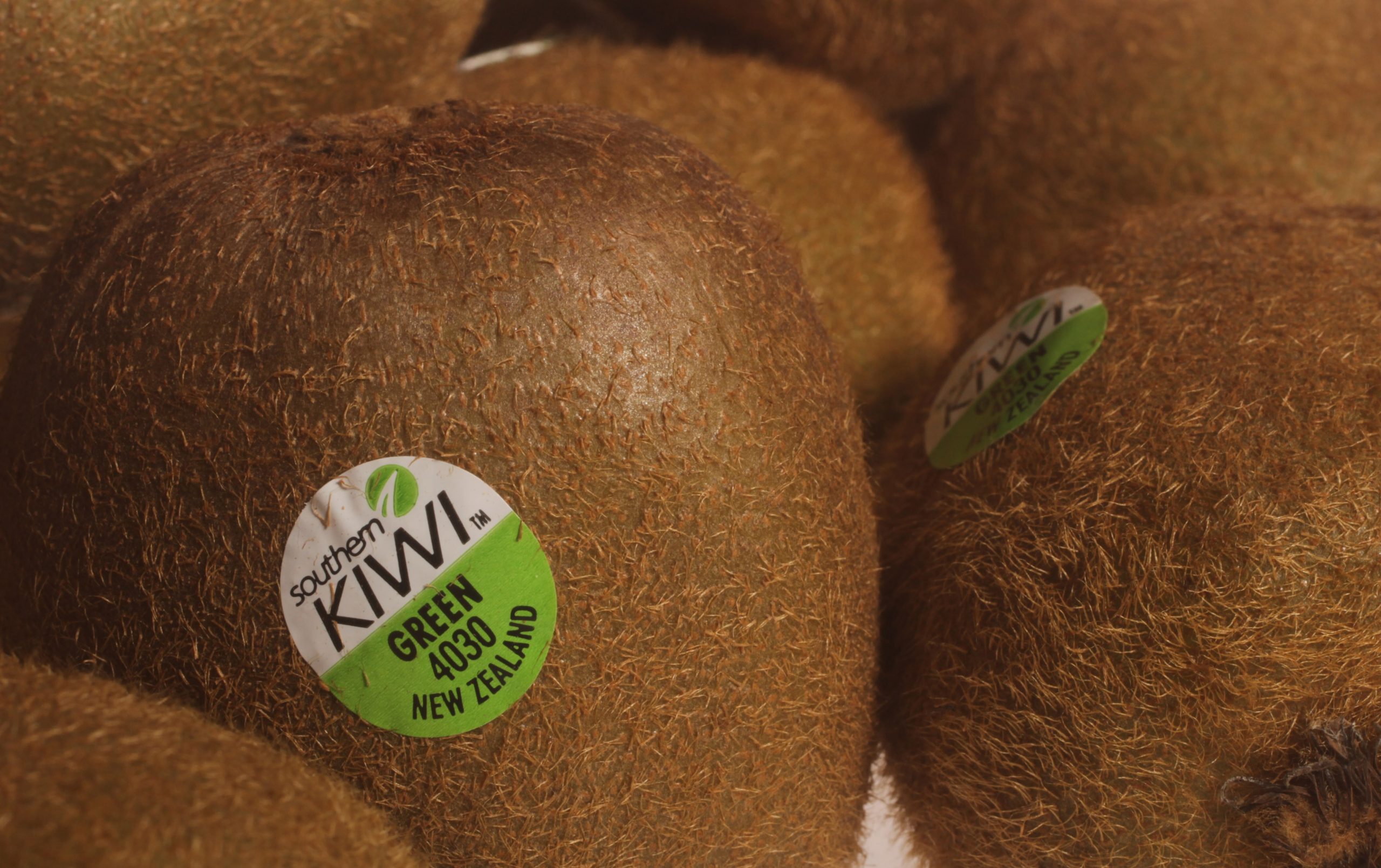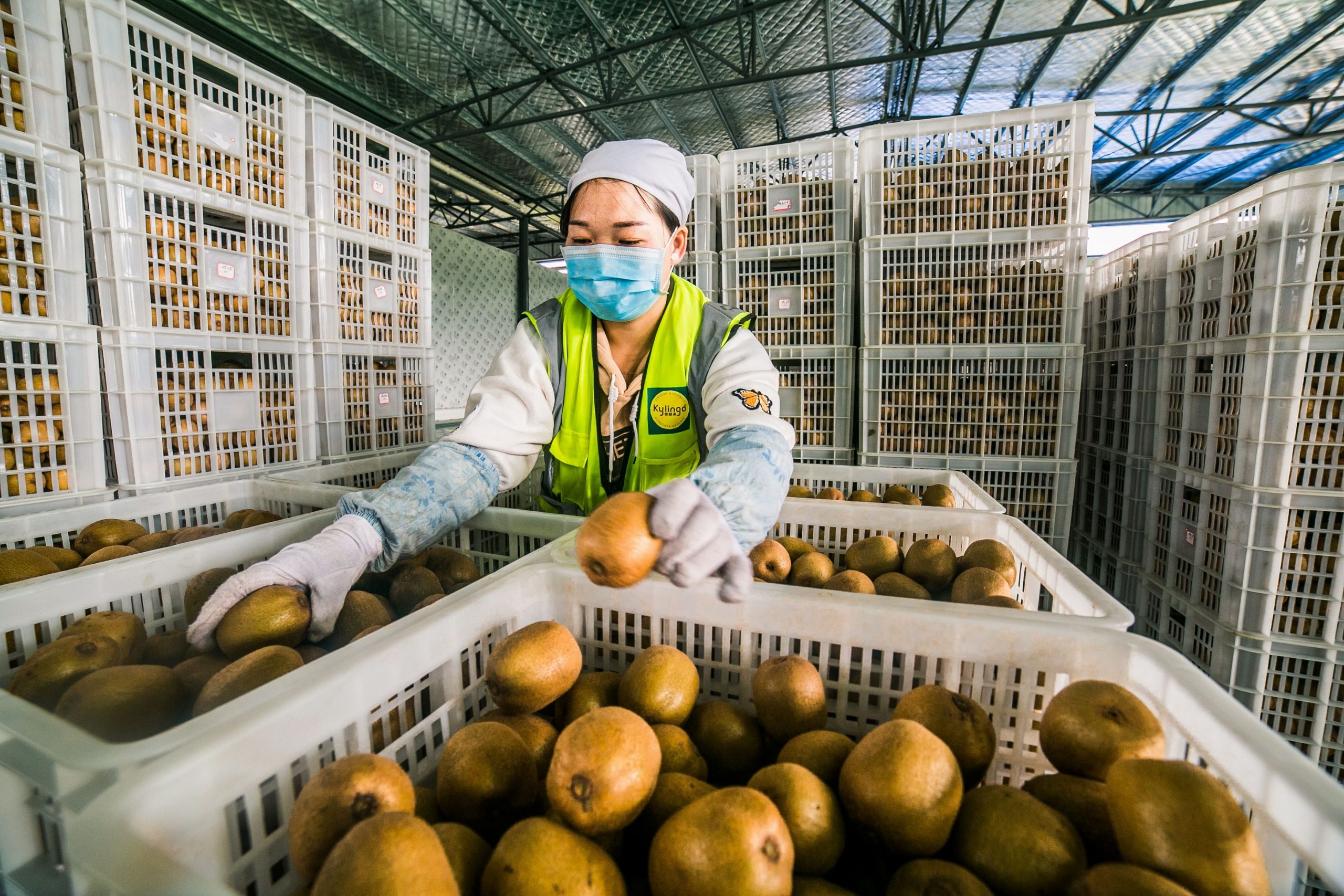Curious Questions: The kiwi fruit is from China, and is China's national fruit — so how did it get its New Zealand-inspired name?
Martin Fone peels the layers back on the strange tale of how the kiwi fruit got its name.


With its furry, light brown skin, bright green flesh speckled with tiny black seeds, and a tropical flavour reminiscent of a mix of strawberries and bananas, the kiwi fruit has moved on from being a rare exotic to a staple fruit on the supermarket shelves. Packed full of vital oxidants, containing almost twice as much vitamin C as an orange and rich in vitamins K and E, it is a fruit for these health conscious times. It is also very versatile, equally tasty when eaten raw, blended into a smoothie, or, taking a leaf out of the Chinese culinary book, as a jam.
There are between forty and sixty species of Actinidia, to give the kiwi fruit its taxonomical generic name, of which A. deliciosa, a separate species since the 1980s, is the most likely to be found in shops. Growing equally as well in the northern and southern hemispheres, the production of kiwi fruit is now big business with a global market estimated to be worth US$1.89 billion in 2024.
Less than a century ago, though, it was virtually unknown, at least in the west. Its rise in fortune — one of commercial agriculture’s greatest success stories of recent decades — was due to a mix of luck, perseverance, and marketing acumen.
Despite its name, the kiwi fruit is indigenous to the temperate forests of the mountains and hills of southwest China, where it was prized for its medicinal properties. The fruit, known as Yang tao, meaning sunny peach, was first mentioned in writing during the Song dynasty in the 12th century, and was collected from the wild rather than cultivated. By the time Li Shizhen produced his compendium of medicine, natural history, and Chinese herbology, Bencao Gangmu, in 1597, it was known as Mihou tao, macaque fruit, because of the monkeys’ predilection for it.
The first specimens of A. chinensis reached Europe in the 1750s, thanks to a Jesuit missionary, Father Pierre Le Chéron d’Incarville. When a plant hunter, Robert Fortune, was sent by the Horticultural Society of London to China between 1843 and 1845 ‘to collect seeds and plants of an ornamental or useful kind’, he also sent a specimen home, which was held at the Royal Botanic Gardens at Kew. It was not until 1886, though, that the first fruits of A. chinensis were even seen in Europe, Kew receiving specimens preserved in spirit. Instead, the plants and seeds were regarded as ornamental curiosities rather than the source of a delicious, edible fruit, not least because early attempts to produce fruit under cultivation were rather hit or miss affairs.

The seeds of A. chinensis which plant collector, E H Wilson, sent from Hupeh in 1900 to one of England’s principal nurseries, James Veitch & Sons Ltd, germinated but, frustratingly, only produced male plants, thus thwarting any plans to grow the plants and fruit commercially. Seeds sent in 1904 by Consul-General Wilcox from Hankow to the United States Department of Agriculture seeds fared better, the resulting vines bearing fruit at the Plant Introduction Field Station at Chico in California by 1910, but their commercial potential was not realised.
Where England had failed and the United States had missed an opportunity, New Zealand was poised to make hay. Missionary and principal of a New Zealand girls’ school, Mary Isabel Fraser, collected some A. chinensis seeds from plants she had come across at a Church of Scotland mission in Yichang and sent them to a Whanganui farmer, Alexander Allison. He planted them and by 1910 the resultant vines had borne their first fruits.
Exquisite houses, the beauty of Nature, and how to get the most from your life, straight to your inbox.
By 1922 cultivars were available commercially with nurseryman, Hayward Wright, from Avondale, now part of suburban Auckland, describing the plant in his catalogue as ‘a wonderful fruiting climber’ which bore a highly valuable new fruit that ripened over a long time during winter. It provided, he claimed, a welcome addition to the relatively meagre range of winter fruits. What he was offering became known as the Hayward cultivar.
"Recognising that the fruit looked vaguely like the flightless brown bird that the country had adopted as its national symbol since 1908, they appropriated its Maori name, kiwi"
Only in the late 1930s did the first commercial orchards and large-scale plantings of kiwi fruits were established and, even then, the produce was only destined for the domestic market. In 1952 when Jim MacLoughlin and Grahame Bayliss, exported kiwi fruits for the first time, thirteen tonnes of them, sending them to England. Within seventy years kiwi fruits have come to dominate the New Zealand commercial horticulture sector, with 184 million trays grown for export, generating, in 2021/22 NZ$2.911 billion in gross sales.
So successful was the Hayward cultivar that it spread worldwide, enabling other countries, such as the United States, Italy, and, in a case of sending coals to Newcastle, even China, to become large-scale producers of kiwi fruit, rivalling and, in some cases, surpassing New Zealand’s position in the global market. Sensing that the genie was well and truly out of the bottle, the New Zealand Kiwifruit Authority lobbied their government in 1982 to ban the export of kiwi plants and seeds, but their appeals fell on deaf ears. Astonishingly, the genesis of the Hayward cultivar and its subsequent iterations can be traced back directly to the seeds that Mary Fraser brought back from Yichang.
The names given to the fruit is a fascinating story in its own right. Once it had broken out of the confines of the Far East it was known as a Chinese Gooseberry, a misnomer as it was not related to the gooseberry, even if it was a berry and hairy and originated from China. Traders soon realised that the name met with consumer resistance as they sought new markets in the 1950s, gooseberries being out of favour and anti-communist sentiments militating against any link, real or imaginary, with Mao’s China.
After much head scratching, Turners and Growers, a fruit packaging company based in Auckland, came up with ‘melonette’ in 1958, but even this proved to be problematic. At the time there were steep import tariffs imposed on melons and there was a fear that the fruit, although not a melon, would attract a prohibitive tax which would make it too expensive to tempt potential new customers.

The following year Turner and Growers’ marketing department pulled off a masterstroke. Recognising that the fruit looked vaguely like the flightless brown bird that the country had adopted as its national symbol since 1908, they appropriated its Maori name, kiwi, for their next attempt to rid it of its connotations with gooseberries. It was a stroke of genius, immediately associating a fruit that was native to the Chinese mainland with New Zealand. And the rest is history.
Curiously, even parts of the Chinese-speaking world have now adopted the name, albeit partially transliterated. In Hong Kong and Taiwan it is known as qi yi quo in Mandarin and kei yi awo in Cantonese, both meaning strange fruit, while an internet search of Mihou Tao still brings up plenty of results, mainly from the People’s Republic. Chinese gooseberries, on the other hand, seem to have sunk into oblivion.
And just to stir the pot further, the kiwi fruit is China’s national fruit. For aficionados of the fruit, though, they have much to thank Mary Fraser for.
After graduating in Classics from Trinity College Cambridge and a 38 year career in the financial services sector in the City of London, Martin Fone started blogging and writing on a freelance basis as he slipped into retirement. He has developed a fearless passion for investigating the quirks and oddities of life and discovering the answers to questions most of us never even think to ask. A voracious reader, a keen but distinctly amateur gardener, and a gin enthusiast, Martin lives with his wife in Surrey. He has written five books, the latest of which is More Curious Questions.
